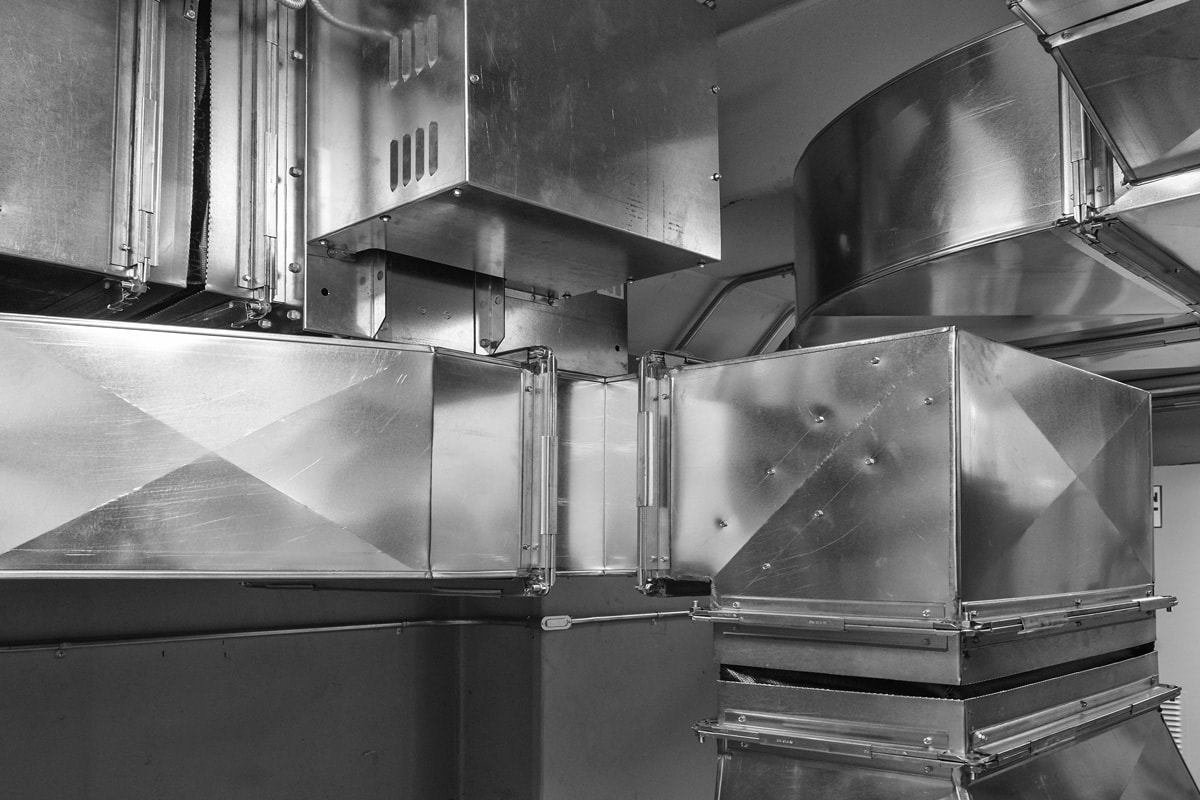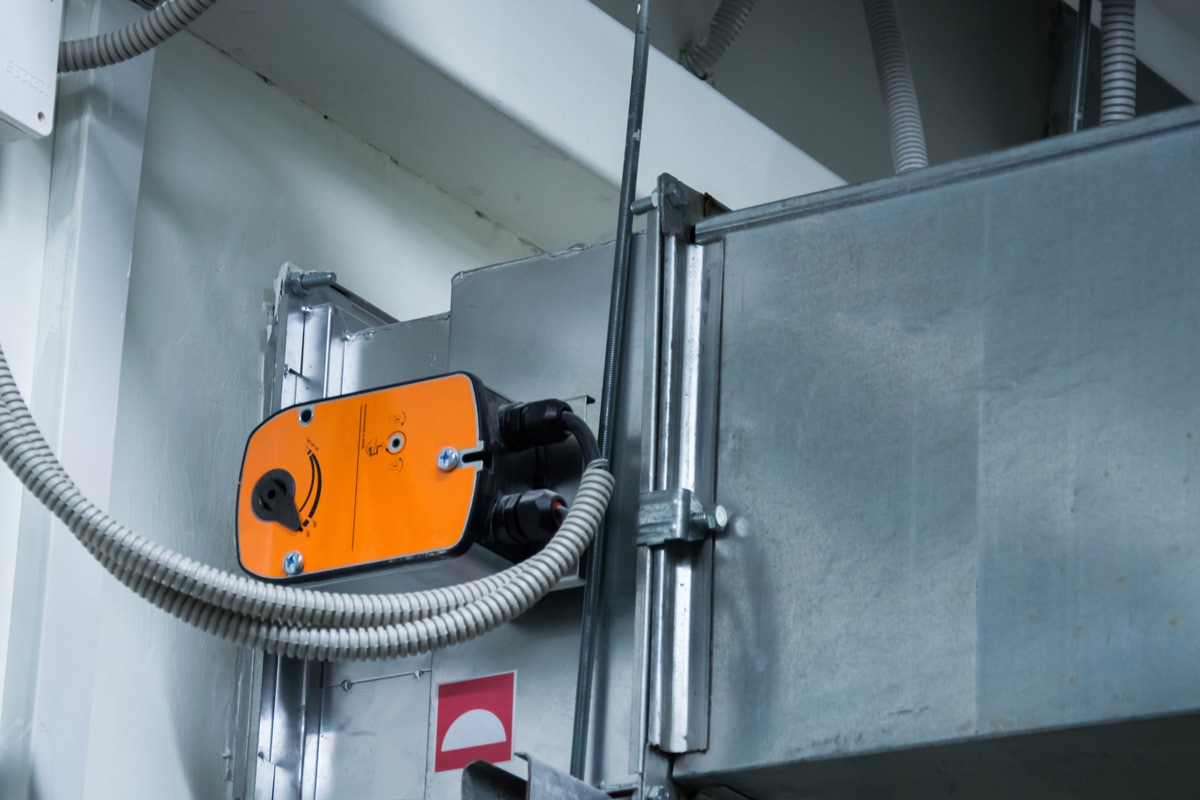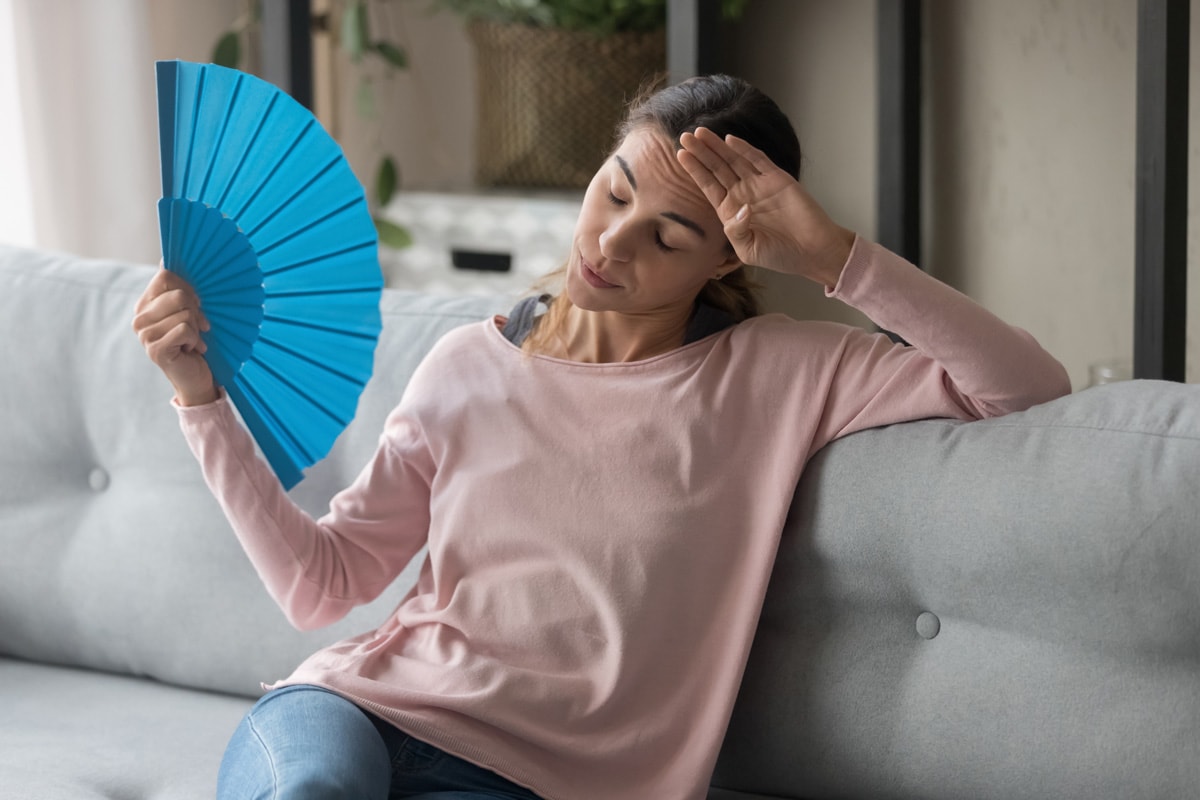The HVAC duct dampers always manage the volume of air moving through a particular stretch of ductwork. But how can you tell whether it is open or closed, anyway? You've come to the right page! The in-depth research we've done has brought us the right answer.
In manual duct dampers, you can say that it is open if their blades are parallel and it's showing a gap. Otherwise, if their blade's position is flat, then it is closed. However, you can easily tell in automatic dampers if their blades are open or closed via the LED light indicator.
That was easy, was it? Continue reading because we're going to delve deeper into this discussion. You can expect us to explain to you how dampers operate. We will also provide simple yet effective steps to adjust your dampers. So stay with us!

How Do HVAC Dampers Work?

HVAC dampers come in two types of categories; the manual type and the automatic type. Regardless of their mechanism settings, their function and operation remain the same.
The dampers in your HVAC system help control the temperature throughout your home, thanks to the HVAC zoning system. Dampers function like valves; they can control the heated or cooled air to get through into various ductwork sections. As a result, homeowners can precisely manage you specific area's airflow requirements.
Furthermore, HVAC dampers will work best if you install them near the opening of the distribution pipes. In this way, the pipe's pressure will easily transport air to which place in your house that demands airflow.
The Various Types Of HVAC Dampers
Butterfly Flat Dish Dampers
As the name suggests, its blade looks like a round butterfly; it consists of a seal and a hinge. The seal connects the edges of the blade to the duct's radius. These act as a catcher to stop anything from getting into the ducts.
Blade Dampers
The metal plates in this damper are the key feature to identify. They work perfectly in both winter and summer seasons at regulating airflow. Compared to butterfly dampers, this results in a more sudden interruption of airflow due to its extra large blades.
Inlet Vane Dampers
Inlet vanes function pretty much the same as little doors, closing off to stop the airflow. It won't slow down or reroute the airflow but assists in regulating the pressure of the air that circulates across the HVAC system.
Louver Dampers
Louver dampers might be a smart option for you if you need dampers that work best in the heating season. These can shut down on their own when there is higher air pressure in one area.
Where Do I Find My HVAC Dampers?
Knowing your HVAC dampers' location is crucial when you need to adjust them at a given moment. For example, when the airflow seems unevenly distributed to the second level of your house, you could easily make a manual adjustment. This would allow the dampers to shut the airflow and allow your upstairs spaces to heat up.
You will find your dampers usually located a few feet from the main trunk or its supply duct.
How Do You Adjust The HVAC Air Duct Dampers?

An HVAC damper system is essential for properly regulating hot or cold airflow in your home. Even though many homeowners are familiar with the procedure, they are still unaware that they can adjust the airflow manually. The key to effectively adjusting your HVAC duct dampers is to ensure your HVAC system is operating properly.
Follow below to learn how you manually adjust your HVAC dampers:
- First, power on the fan or adjust the thermostat to operate the system while adjusting the dampers.
- Find and open all the dampers by pointing their blades or plates parallel to the duct register.
- Properly identify which ducts supply the various rooms by tracking each one of them.
- Next, close your dampers on every ductwork and make a note of which rooms lack air circulation. This helps you identify which room isn't receiving proper airflow movement.
- Now you can adjust each damper according to each room's airflow requirements. Manually rotate them perpendicular to your ducts' openings.
- After a thorough adjustment, let the system run for a day or two, and afterward, check its performance again.
- Upon confirming that you've successfully achieved your comfort satisfaction, make a mark the position of the dampers. Doing so prevents this hassle again in your next adjustment.
Note: These entire steps will serve you nothing if your HVAC system isn't functioning well.
When Should You Open Or Close Your HVAC Dampers?
In the winter, you won't need to do many heating changes to ensure warm air reaches your rooms. Especially on the second floor, since hot air rises naturally.
However, in the summer, the second level will experience issues due to that warmer air rising. Additionally, the area will become even hotter due to a warm attic.
Considering these factors, the second level will typically require more ventilation to stay comfortable. Therefore, dampers on your higher floors should remain open while those on your ground floors are in a close position.
How Do I Know If HVAC Dampers Are Going Bad?

You must first identify whether your HVAC damper is manual or automatic to correctly diagnose problems with your damper. The manual dampers feature adjustment levers on the ducting, and automatic dampers use control motors.
If you observe sudden temperature changes all over your home, there's a huge suspicion that your HVAC dampers are going bad. When an HVAC damper malfunctions, sufficient airflow across the duct system is no longer possible.
How Often Do I Inspect HVAC Dampers?

Dampers that manifest early failure are the result of a lack of regular system maintenance. Remember that your HVAC damper's ideal servicing cycle should occur every 60 days.
Your HVAC dampers are no different from other vital pieces of HVAC equipment inside your home. Ignoring routine maintenance will certainly lead to its early breakdown.
The following are the guidelines you can use for simple and proper damper maintenance:
- Check the damper blades and ensure they can freely move or rotate as they should.
- Conduct further testing on your dampers without plugging the actuator to verify if it's working on its own.
- Inspect damper seals as to whether they can still close. Replace them if they look severely worn out.
- Damper mechanisms also have bushing and pins; these components could become rusted over time. Replacing them with new ones will increase their overall function.
- Clean any dirt or debris in your dampers blade using a lint cloth.
- All your damper's metallic base parts should be lubricated using a nonoil lubricant.
Get this damper seal on Amazon.
NOTE: This procedure may seem so easy but it is always a good idea to let this kind of task be done by an expert.
How Long Do HVAC Dampers Will Last?
Dampers for HVAC systems have a surprisingly long lifespan expectancy of about 15-years. However, this will always depend on the way you maintain it. Under proper maintenance, your HVAC dampers could last longer than 15 years.
In dampers with automatic settings, you can expect them to last around 15-years as well. After all, just like any other electrical component, they are susceptible to early failure if regular servicing is ignored.
We highly suggest you replace any HVAC dampers already past their average lifespan. Doing so will surely boost your HVAC system to deliver comfort in your home.
Buy this dependable Manual Damper on Amazon.
To Wrap Things Up
Recognizing whether your HVAC dampers open or close can help improve your home's overall satisfaction. Throughout this article, we've learned tons of significant information that you can use to keep your HVAC dampers in utmost operation.
This includes providing various types of HVAC dampers. You also know how you properly adjust your HVAC dampers when it becomes inconsistent. Use all of this knowledge to your benefit while you're using your HVAC dampers.
If you find this topic interesting, also read our other topic below!


